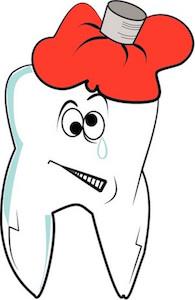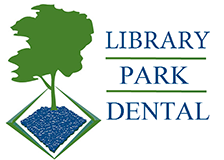Do You Have Periodontal Disease?

At Library Park Dental we want to educate our patients about periodontal disease and how to prevent it. If you have already developed periodontal disease, then your team members will talk to you about the options available to you.
Periodontal disease is a bacterial infection that damages the attachment fibers and supporting bones that hold the teeth in the mouth. If it is untreated, periodontal disease can lead to tooth loss and the bacteria can put you at higher risk for heart attack or stroke. The main cause of the periodontal disease is a bacterial plaque, the sticky, colorless film that constantly forms on teeth.
Healthy gums are pink and firm. If your gums are red or swollen, tender, or you notice that they are receding (pulling away) from your teeth, you need to contact us as soon as possible. Sometimes people notice that they have bad breath or that there are new spaces between their teeth. These are all symptoms of periodontal disease.
Plaque develops on teeth because the sugars and acids that are in our food and drink react to the bacteria in our mouths. We all have plaque, but it is important to brush it away at least twice a day and floss once a day. The longer the plaque stays on our teeth the more it hardens and develops into tartar. Tartar cannot be brushed or flossed away; it needs professional cleaning to remove it.
If tartar is not removed, it will create pockets under the gumline and by the root of the teeth. At that point, it begins a cycle of more inflammation, more bacteria and tartar, and infection sets in. If there is too much bone loss or infection, the tooth can loosen and may have to be removed.
The first step to preventing periodontal disease is to brush twice a day and floss once a day. The second step is to have regular professional cleanings and checkups. And if you have periodontal disease, there is a wide variety of options and treatments to choose from depending on your individual circumstance.
If you are concerned about your gums or your periodontal disease, contact our office today and make an appointment so that we can help you improve your oral health.
